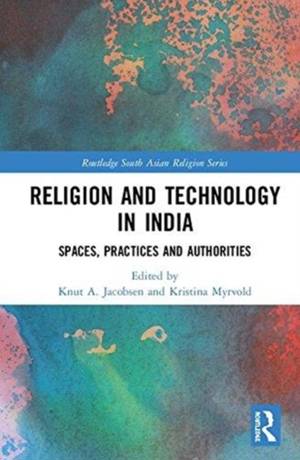
- Afhalen na 1 uur in een winkel met voorraad
- Gratis thuislevering in België vanaf € 30
- Ruim aanbod met 7 miljoen producten
- Afhalen na 1 uur in een winkel met voorraad
- Gratis thuislevering in België vanaf € 30
- Ruim aanbod met 7 miljoen producten
Religion and Technology in India
Spaces, Practices and Authorities
Omschrijving
Religion tends to flourish when technological developments create new possibilities for communication and representation, and simultaneously change as a consequence of these developments.
This book explores intersections between religion and technology in India, at the present and in the colonial past, and how various forms of techno-religious intersections transform and open up for new religious practices, discourses, communities, and institutions. With focus on Indian contexts and religions, it discusses various empirical and theoretical aspects of how technological innovations create, alter, and negotiate religious spaces, practices and authorities. The book provides rich and multifaceted empirical examples of different ways in which technological practices relate to meanings, ideas, and practices of religions. The techno-religious intersections generate several questions about authority and power, the politics and poetics of identity, community and place, and how religious agency, information, and experience are mediated, commodified, and adjusted to new demands of societies. The chapters explore the Hindu, Jain, and Sikh traditions in relation to new technological developments and media, such as photography, new means of visualization, TV serials, mobile phones, and online communication.
The book will be of interest to academics studying modern and contemporary India and South Asia, and especially the role of religion and technology.
Specificaties
Betrokkenen
- Uitgeverij:
Inhoud
- Aantal bladzijden:
- 216
- Taal:
- Engels
- Reeks:
Eigenschappen
- Productcode (EAN):
- 9780815384168
- Verschijningsdatum:
- 6/06/2018
- Uitvoering:
- Hardcover
- Formaat:
- Genaaid
- Afmetingen:
- 160 mm x 236 mm
- Gewicht:
- 453 g

Alleen bij Standaard Boekhandel
Beoordelingen
We publiceren alleen reviews die voldoen aan de voorwaarden voor reviews. Bekijk onze voorwaarden voor reviews.










